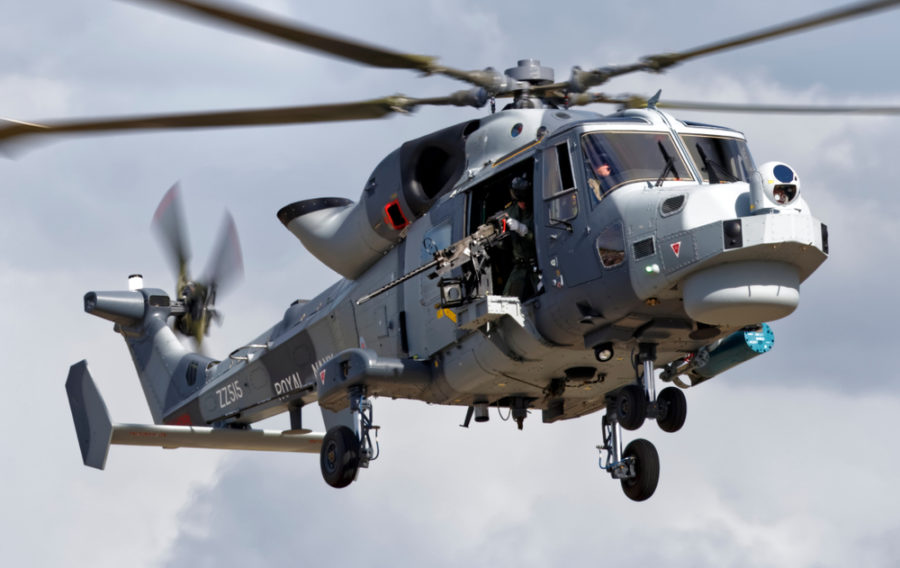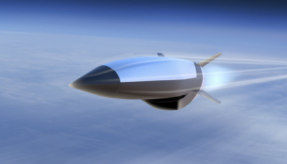
Leonardo and Thales are proud to announce the first successful firings of the Thales ‘Martlet’ Lightweight Multirole Missile (LMM) from Leonardo’s AW159 Wildcat helicopter.
The firings were conducted as part of the UK MoD’s Future Anti-Surface Guided Weapon (FASGW) programme and demonstrated the integration of the Martlet onto the AW159 platform.
This represents a major milestone for the programme and will enable this high-end capability to enter service with the Royal Navy later this year.
The firing trials were conducted from 27th April to 21st May 2020 and despite the current COVID-19 situation, Leonardo and Thales were able to support the UK Ministry of Defence by completing this critical activity.
All of the teams involved had to adopt strict distancing procedures, in some cases having to find new ways of working, in order to make sure that the trials could go ahead. It is a testimony to the professionalism of those involved that these trials were successfully completed under such challenging and novel circumstances.
“This major milestone demonstrates that the combination of the AW159 Wildcat and Martlet missile will be a flexible and effective tool for the Royal Navy. Next year the Wildcat fleet will embark on Carrier Strike Group missions with HMS Queen Elizabeth on its maiden operational deployment. As the only British company to design and manufacture helicopters on-shore, we’re extremely proud to be equipping the UK Armed Forces with world-beating sovereign capabilities.” said Nick Whitney, Managing Director of Leonardo Helicopters (UK).
“The successful live firings of the Thales LMM Martlet from the AW159 Wildcat is a key milestone in the programme, delivering a significant step-change in capability for the platform. LMM Martlet will ensure that the Wildcat has the best-in-class offensive capability to protect HMS Queen Elizabeth and her task group during her maiden operational deployment next year. With each platform capable of carrying up to 20 Martlet, the Wildcats deployed with the task group will be a significant deterrent to anyone wishing to interfere with UK interests.” said Philip McBride, General Manager, Integrated Airspace-protection Systems, Thales UK.
In July 2014, Leonardo signed a contract with the UK Ministry of Defence to integrate, test and install the MBDA Sea Venom (heavy) and Thales LMM (light) missile systems onto Royal Navy AW159 Wildcat helicopters, a programme called Future Anti Surface Guided Weapon (FASGW).
The FASGW (light) part of the programme has now seen the LMM, with its associated launcher and airborne laser guidance unit, successfully integrated into the Leonardo AW159 Wildcat sensor, displays and avionics systems. The LMM provides a step-change in capability for the Royal Navy which, in the maritime environment, faces a major challenge in engaging smaller, fast-moving, asymmetric threats, due to their high mobility, their small thermal and radar signatures and the severe background clutter encountered. The LMM is capable of surmounting these issues where traditional electro-optic and radar guidance systems do not provide the certainty of hit required.
On-board the AW159 Wildcat platform, the LMM Martlet could also allow operators to engage air targets such as UAVs and other maritime helicopters.
The launchers are mounted to the AW159 via the new Leonardo Weapon Wing, developed at the Company’s design and manufacturing facility in Yeovil and first trialled last year. Each weapon wing will be able to carry either ten Martlet or two Sea Venom missiles and generates additional lift for the helicopter in forward flight, reducing demands on the main rotor.
The twin-engine multi-role AW159 is able to conduct missions ranging from constabulary to high end warfighting where it has the capability to autonomously detect, identify and attack targets on land and at sea, including submarine threats. The high-performance platform has state-of-the-art systems, including a Leonardo Seaspray multi-mode electronically-scanning (E-scan) radar, and integrated electronic warfare Defensive Aids Suite (DAS).
Over 50,000 flight hours have been logged by the helicopter. The AW159 has also been chosen by the British Army, the Republic of Korea Navy and the Philippine Navy as a new maritime operator of the helicopter.
image © Andrew Harker / Shutterstock.com
If you would like to join our community and read more articles like this then please click here.







